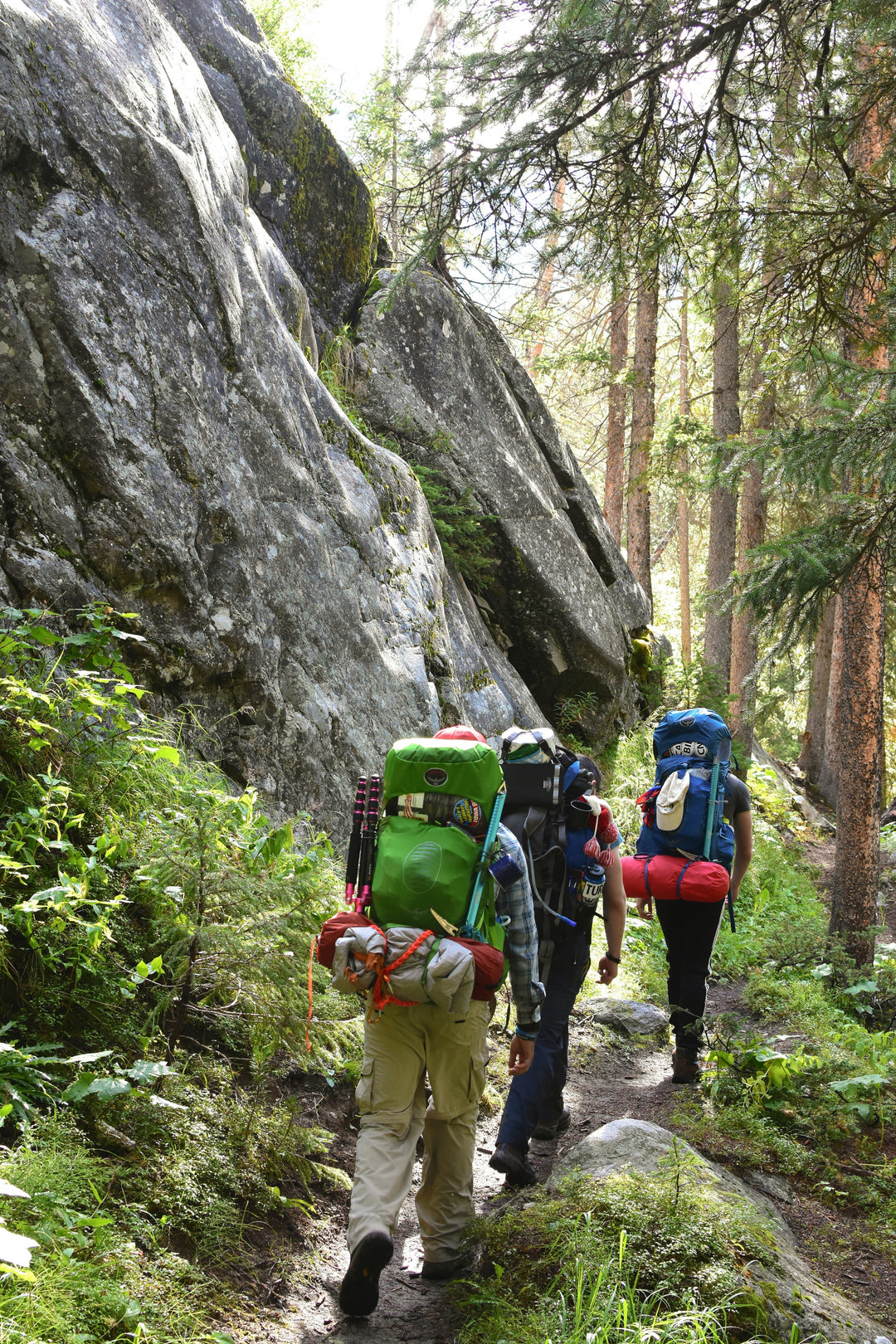The Legacy of John Muir and the Creation of Yosemite

John Muir, often called the "Father of National Parks," left a remarkable legacy that continues to inspire nature enthusiasts, history buffs, and environmental activists. His profound love for the natural world and his unwavering dedication to preserving it played a pivotal role in establishing Yosemite National Park.
In this guide post, we'll explore Muir's life, his crucial contributions to environmentalism, and the lasting impact of his work on Yosemite and beyond. By understanding Muir's legacy, we can appreciate the importance of conservation and the vital role we each play in safeguarding our planet.
John Muir and His Connection to Nature
Early Life and Influence
John Muir was born in 1838 in Scotland and immigrated to the United States at a young age. His early experiences in nature greatly influenced his life's work. Growing up in Wisconsin, he developed a deep appreciation for the outdoors and spent much of his time exploring the wilderness.
These formative years instilled in him a lifelong passion for nature, which would later shape his advocacy for conservation. Throughout his life, he was captivated by the beauty of the natural world. He embarked on numerous expeditions, often trekking through rugged landscapes and documenting his observations in journals.
His writings revealed his belief that nature had inherent value and should be preserved for future generations. Muir's early experiences and his unwavering curiosity about the natural world laid the foundation for his groundbreaking work in environmentalism.
Founding the Sierra Club
In 1892, Muir co-founded the Sierra Club, an organization dedicated to protecting and preserving the environment. The Sierra Club became one of the first environmental organizations in the United States and continues to be a driving force in conservation efforts today.
He served as the club's first president, using his leadership to rally support for critical conservation initiatives. The Sierra Club played a significant role in advocating for the protection of national parks and wilderness areas.
Through grassroots campaigns and public outreach, the organization raised awareness about the importance of preserving natural spaces. Muir's vision for the Sierra Club was rooted in his belief that people should experience the beauty of nature firsthand to appreciate its value fully.
Muir's Role in Establishing Yosemite National Park
Muir's most enduring legacy is his pivotal role in establishing Yosemite National Park. In the late 19th century, The writings and advocacy efforts of John Muir brought national attention to the unparalleled beauty of Yosemite Valley. He tirelessly campaigned for its preservation, emphasizing the need to protect the majestic landscapes from commercial exploitation.
His dedication paid off when, in 1890, Congress established Yosemite National Park, ensuring the protection of iconic features like El Capitan and Half Dome. This victory was a testament to his persistence and ability to inspire others to recognize the significance of preserving natural wonders. Yosemite National Park remains a symbol of the broader conservation movement and reflects Muir’s vision.
Yosemite's Place in American History
Historical Context of Yosemite
Before Muir's involvement, the area now known as Yosemite had long been inhabited by Indigenous peoples who valued its natural resources. However, as European settlers encroached upon the land, tensions arose, leading to conflicts and displacement of native communities. In the mid-1800s, Yosemite's stunning landscapes attracted the attention of artists and explorers, sparking interest in its preservation.
The increasing popularity of Yosemite as a tourist destination fueled concerns about its protection. The Yosemite Grant Act of 1864 marked a significant milestone in conservation history, as it set aside the Yosemite Valley and Mariposa Grove for public use, marking the first instance of land being preserved for the enjoyment of all Americans. This act laid the groundwork for the establishment of national parks and marked a shift in how society valued natural spaces.
Muir's Exploration and Documentation
Muir's exploration of Yosemite was instrumental in bringing its beauty to the forefront of public consciousness. Armed with a notebook and a keen eye for detail, he meticulously documented his experiences in the valley. His writings captured the awe-inspiring landscapes and unique ecosystems he encountered.
Muir's vivid descriptions of Yosemite's grandeur resonated with readers across the nation. His ability to convey the spiritual and ecological significance of the area drew attention from influential figures, including President Theodore Roosevelt. In 1903, John Muir and Roosevelt embarked on a camping trip in Yosemite, where Muir passionately advocated for the creation of protected lands. This pivotal meeting ultimately led to increased federal protection of natural areas, solidifying his impact on the national conservation movement.
Yosemite's Significance in Conservation
Yosemite National Park stands as a testament to the power of conservation and the enduring legacy of John Muir. Its establishment marked a turning point in how Americans viewed the natural world, emphasizing the importance of preserving landscapes for future generations. Yosemite's designation as a national park inspired the creation of many other protected areas across the country.
Muir's efforts also highlighted the interconnectedness between humanity and the environment. He believed that by immersing ourselves in nature, we could gain a deeper understanding of our place in the world and the responsibility we have to protect it. Yosemite remains a vital symbol of the conservation movement, serving as a reminder of the ongoing need to safeguard our planet's natural treasures.
The Ongoing Legacy of John Muir
Muir's Impact on Conservation
John Muir's writings and advocacy laid the foundation for modern environmentalism. His eloquent prose and passionate appeals for conservation continue to inspire individuals to take action in protecting the Earth's natural wonders. John Muir's legacy lives on in the countless national parks, wilderness areas, and protected lands that stand as testaments to his vision.
His philosophy of conservation as a moral imperative resonates with environmental activists and advocates worldwide. The belief that preserving nature is essential for the well-being of future generations underscores the importance of sustainable practices and responsible stewardship. This legacy reminds us that the fight for the environment is ongoing and that each of us can contribute to positive change.
Contemporary Challenges in Yosemite
While Yosemite remains a beloved national treasure, it faces contemporary challenges that threaten its ecological integrity. Climate change, habitat loss, and increased tourism pose significant risks to the delicate balance of its ecosystems. To address these issues, collaborative efforts are needed to ensure the park's long-term sustainability.
Conservationists, park managers, and local communities are working tirelessly to mitigate the impacts of these challenges. Restoration projects, public education initiatives, and sustainable tourism practices aim to preserve Yosemite's unique landscapes for future generations. By addressing these challenges head-on, we honor Muir's legacy and ensure that Yosemite continues to inspire and educate visitors.
Supporting Muir's Legacy
Visitors to Yosemite have the opportunity to contribute to the ongoing legacy of John Muir by becoming stewards of the environment. Simple actions, such as practicing Leave No Trace principles, respecting wildlife, and supporting conservation organizations, can make a significant difference in preserving the park's natural beauty.
Engaging in advocacy efforts and raising awareness about the importance of conservation can amplify Muir's message and inspire others to take action. By sharing Muir's story and the significance of Yosemite, individuals can encourage a deeper appreciation for the natural world and foster a sense of responsibility for its protection.
Conclusion
John Muir's enduring legacy is a testament to the power of one individual's passion and dedication to preserving the natural world. Through his writings, advocacy, and tireless efforts, Muir played a pivotal role in establishing Yosemite National Park and inspiring the conservation movement.
Yosemite stands as a beacon of hope and a reminder of the importance of safeguarding our planet's natural treasures. By honoring Muir's legacy and engaging in conservation efforts, we can ensure that future generations experience the awe and wonder of places like Yosemite.
Commemorate Your Park Adventures with National Park Prints
Relive your adventures with our National Park Prints. These beautifully designed prints capture the essence of the trails and landscapes that have brought joy and inspiration to many. Whether it’s Yosemite’s majestic cliffs or the serene beauty of another cherished park, each poster is crafted from detailed national park maps, making it easy—and fun—to remember your favorite hikes.
Highlight your favorite moments and connect with your adventure once more. Order your National Park Poster to adorn your space with memories of the trails you’ve loved. Add a unique piece of art to your collection that not only celebrates the park’s beauty but also your experiences within it. Order yours now and keep the spirit of exploration alive in your home.







